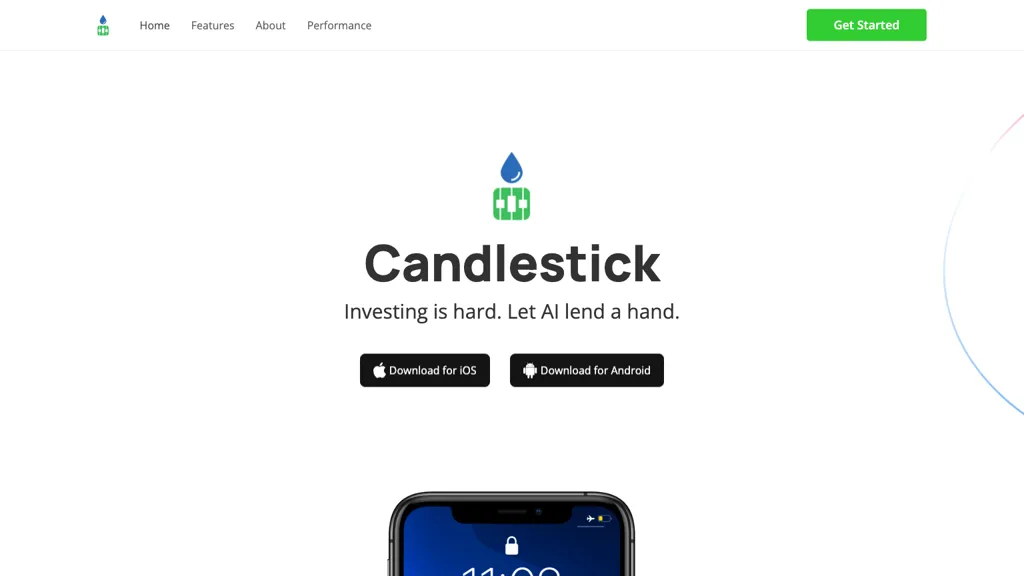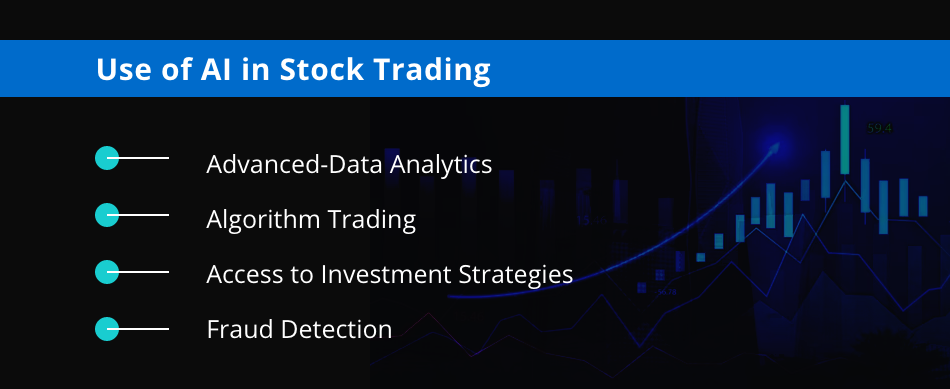20 Handy Tips For Deciding On AI Stock Analysis Websites
20 Handy Tips For Deciding On AI Stock Analysis Websites
Blog Article
Top 10 Tips On Assessing The Cost And Price Of Ai Analysis And Stock Prediction Platforms
To make the most of your investment, it's essential to understand and evaluate pricing on AI software that predicts and analyzes stocks. Pricing can vary greatly and it's crucial to understand what you're getting for your money. Here are the 10 best tips for evaluating price and cost.
1. Understanding Pricing Model
Subscription-based: Find out whether the platform has a monthly or annual cost and what features are included at each tier.
Pay-per Use: Verify whether the platform charges for usage (e.g. the amount of trades made and data requests made, or forecasts).
Freemium: Find out if a platform has a limited free tier and charges extra for premium features.
2. Compare Pricing Tiers
Overview of features: See what features are offered in each price the tier (e.g., basic, professional, enterprise).
Scalability: Make sure your pricing levels are in line with your needs, whether you're an individual trader or professional.
Upgrade flexibility: Find out whether it's possible to upgrade or downgrade your plan as you change your requirements.
3. Evaluate Hidden Costs
Data charges: Find out if have to pay extra to access premium data.
Brokerage Fees: Find out if your platform charges extra costs for trade execution or integration.
API usage: Assess whether the cost of API access is higher or if API usage is frequent.
4. Demos, Free Trials and Test Drives
Trial period: Choose platforms that allow you to test out the features of their platform before you make a commitment.
Trial limitations: Decide whether you are able to use all features included in the trial, or only a limited number.
You have no commitment options: Make sure you can cancel the trial without incurring any charges if the platform doesn't meet your requirements.
5. Be sure to check for discounts and promotions.
Discounts on annual subscriptions Comparing the monthly plan against an annual subscription.
Referral programs. Make sure the platform gives credits or discounts for referring users.
Pricing for institutions If you're part an enterprise, inquire about institutional or bulk pricing.
6. Assess Return on Investment (ROI)
Cost in relation to. value: Determine if the platform's features and predictions justify its cost. Do you have time saved or make better decisions when trading?
Track record of performance: Study the platform's success rate or testimonials from users to determine its potential ROI.
Costs of other platforms: Compare the cost of the platform with the cost of utilizing it (e.g. missed opportunities, manual analyses time).
Review Cancellation/Refund Policies
Cancellation policy: Make sure that you can cancel the subscription without penalty or hidden charges.
Make sure to check if there's any policy on refunds for subscriptions you haven't used.
Auto-renewal (automatic renewal): Find out whether you need to renew your subscription automatically. Find out the procedure to remove yourself from the subscription.
8. Prices should be transparent
A clear pricing page: Make sure that the platform has a clear and detailed pricing page that does not include any fees hidden.
Customer support: Contact customer support to discuss any pricing ambiguities or additional costs.
Contract terms: Review the terms of service to understand any commitments to stay or penalties that are long-term.
9. Compare with Competitors
Comparing features: Ensure that you're getting the most value and the best platform when comparing it against its competitors.
Review by users: Go through reviews from users on the platform and determine whether it's worth the money.
Market positioning: Check whether it's priced at an upper-end, mid-range or low-cost alternative and if it is in line with what you expect.
10. Calculate Long-Term Costs
Price increases: Determine whether there is a pattern of price increases and the frequency at which they occur. often they occur.
Additions of features: Check if your current plan includes new features or requires an upgrade.
Costs of Scalability: Ensure that the pricing of your platform is reasonable as your trading activities or requirements for data expand.
Bonus Tips
Test different platforms. You can test a variety of platforms for free, and then compare them.
Offer prices to negotiate: If you have a lot of customers or are part of an organization, ask for discount and pricing that is custom to your needs.
Check for educational resources Certain platforms provide free educational resources or tools that add value over their primary features.
These tips will aid you in evaluating the price and expenses of AI stock-predicting/analyzing trading platforms. You can select one that fits your budget, while providing the features you need. A reputable platform will provide the right balance between cost and performance, which will help you to maximize your trading performance. Follow the best this post about investment ai for more recommendations including ai trade, ai for investing, AI stock trading bot free, trading with ai, trading ai, stock ai, trading ai, ai investment app, ai trading, investment ai and more.
Top 10 Ways To Evaluate The Latency And Speed Of Ai Platforms For Trading Stocks
For high-frequency, algorithmic, and active traders in particular the area of speed and latencies are key factors when evaluating AI platforms for stock forecasting/analyzing. Even milliseconds delay can affect the execution of trades. Here are the top ten strategies for evaluating latency and speed on these platforms:
1. Data feeds that are real-time: How do you analyze them
Data delivery time: The platform should provide precise, real-time data in the shortest amount of time (e.g. with sub-millisecond delay).
Nearness of the data source: To decrease the time needed to transfer data, verify whether your platform's servers can be situated near major exchanges.
Data compression: Find out if your platform utilizes effective data compression techniques in order to accelerate data delivery.
2. Speed of execution test for trades
Time to process orders: Determine how fast the platform process and executes trades once you submit an order.
Direct market access (DMA). Check to see if the platform you are using has DMA. DMA allows orders that are sent directly to exchanges to be processed without any intermediaries.
Execution reports: Find out whether the platform has comprehensive execution reports, such as timestamps for order submission, confirmation and fill.
3. Examine the Platform's Responsiveness
User interface (UI also known as speed of user interface) The speed of user interface is the speed at which the UI of a platform reacts to the inputs you make (e.g. clicking buttons, loading graphs).
Chart updates: Check if charts and visualizations update in real-time without lag.
Mobile app performance. When using an app designed for mobile make sure it is performing as quickly and smoothly as a desktop application.
4. Verify that the infrastructure is low-latency.
Server Locations: Choose servers that are low-latency, and located near major financial centers, or exchanges.
Co-location Services: Check if the platform allows co-location. This will allow you to save your trading algorithm on servers that are close to the Exchange.
High-speed network: Determine if the platform is using high-speed fibre-optic networks, or other technologies with low latency.
5. Backtesting and Evaluation of Simulation Speed
Find out how fast your platform can process and analyze the historical data.
Simulation latency: Ensure that the software can simulate trading in real-time without obvious delays.
Parallel processing: Check whether the platform is using parallel processing or distributed computing to speed up complicated calculations.
6. Calculate API Latency
API response time The API response time is the rate at that an API platform responds to requests.
Rate limits. Verify whether there are acceptable limits for the API. This can aid in preventing delays during high-frequency transactions.
WebSocket support Find out if your device is running WebSocket protocol for low-latency real-time streaming of data.
7. Test Platform Stability When Loaded
High volume trading scenarios: Test the stability and adaptability by simulating trading scenarios.
Market volatility: Test the platform during times of high volatility to determine if it is able to handle rapid pricing adjustments.
Stress testing: Determine if your platform provides the tools to test stress-testing strategies in extreme circumstances.
8. Study the network and its connectivity
Internet speed requirements: Check that your internet connection meets the platform's recommended speed for optimal performance.
Check for redundant connections.
VPN latency. If you are using VPN, VPN be sure to check whether it causes significant latency.
9. Check for speed optimization features
Pre-trade Analytics: Make sure the platform offers pre-trade analysis to optimize the speed of execution, order routing and other factors.
Smart order routing: Check if your platform is using SOR to locate the fastest and most cost-effective execution site.
Monitoring latency: See whether the platform provides tools for monitoring and analyzing the latency in real-time.
10. Review User Feedback and Benchmarks
Reviews from users: Perform user research to evaluate the platform's latency and speed.
Third-party benchmarks: Look for independent benchmarks or reviews that compare the speed of the platform to other platforms.
Case studies Ask the platform if it has any case studies or testimonials that show its capabilities for low latency.
Bonus Tips
Trial time: You are able to use a free demo or trial period to test the performance of the platform and its latency.
Customer support: Make sure the platform has customer support in order to reduce latency or other issues.
Hardware requirements: Check if you need specific hardware to get the best performance (e.g. high-performance PCs).
Follow these tips to evaluate the speed and latency for AI platforms for predicting and analyzing stocks. Choose a platform that suits your trading needs and also minimizes the time it takes to complete transactions. The importance of low latency is particularly important for algorithmic and high-frequency traders, as even minor delays can impact the profitability. Check out the top ai options url for website info including AI stock analysis, ai options trading, can ai predict stock market, best ai trading platform, best ai for stock trading, AI stock analysis, free ai tool for stock market india, ai for trading stocks, best stock prediction website, ai tools for trading and more.